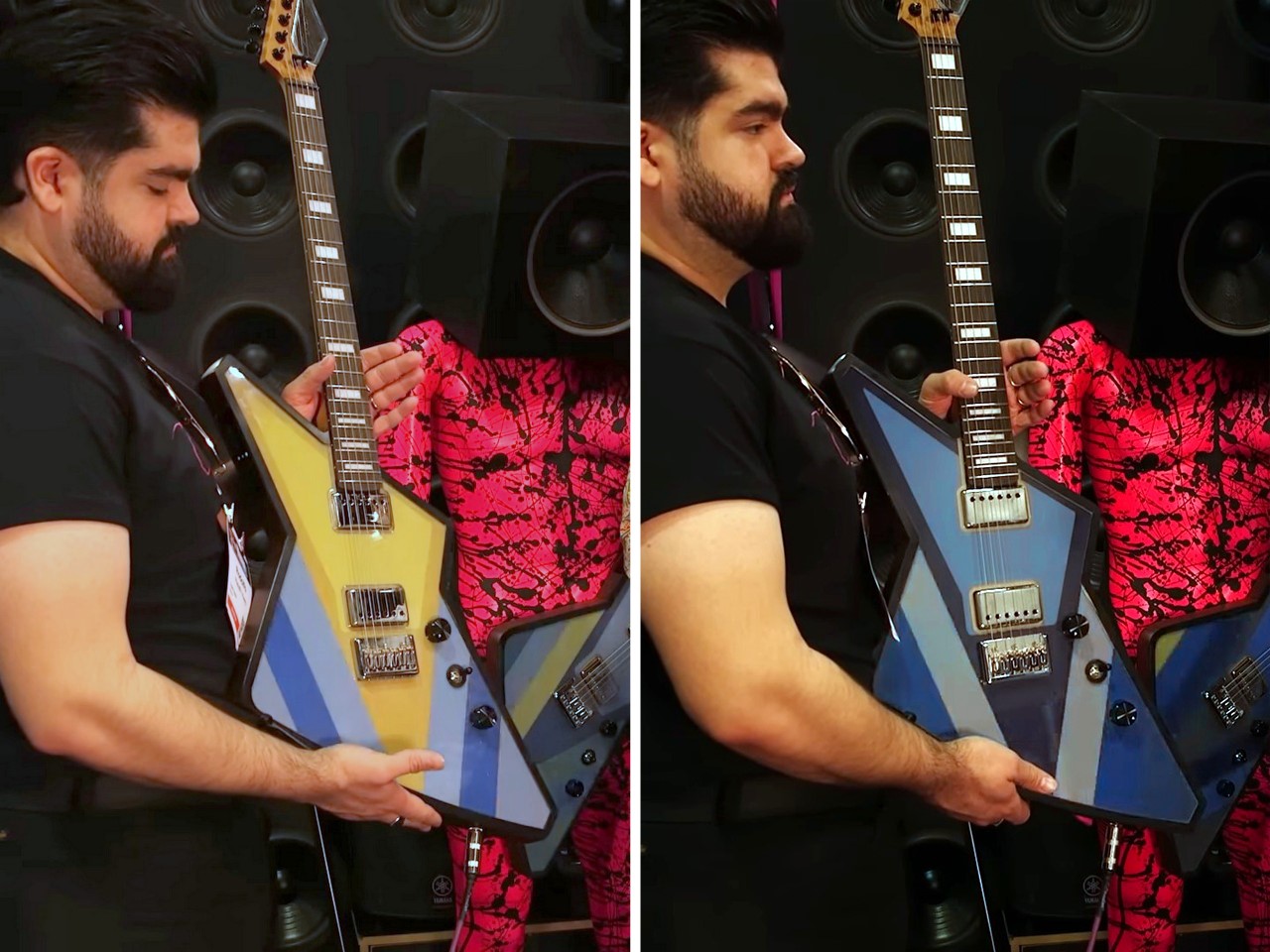Guitars have always been about expression, both sonically and visually. From Eddie Van Halen’s red-striped Frankenstrat to Steve Vai’s neon Ibanez Jem, design has played a crucial role in shaping an artist’s identity. But at NAMM 2025, the Voltage DaVinci guitar pushed visual expression to a new level, replacing traditional paint jobs with a dynamic, ever-changing E Ink display. Instead of being locked into one aesthetic, players can now shift colors and patterns on demand, creating a performance experience that feels alive… and a guitar that feels like it’s honestly a ‘main character’ instead of a humble instrument for human creativity.
Developed by Cream Guitars in collaboration with E Ink, the Voltage DaVinci features a series of flexible, ultra-thin panels seamlessly integrated into its wooden body. Unlike LED displays, which require constant power and emit light, E Ink technology reflects ambient light, making the visuals appear naturally embedded rather than artificially lit. This means the guitar maintains a sleek, classic silhouette without the bulky look of screens. The color transitions are smooth and fluid, creating an organic, almost living texture across the instrument’s surface.
Designer: Cream Guitars
The technology behind this isn’t entirely new—E Ink displays have been seen in concept devices like the Infinix E-Shift Color phone at CES 2024, where the back panel changed hues based on user preference. But this marks the first time the concept has been applied to a musical instrument, blending digital aesthetics with traditional craftsmanship. Instead of a static paint job, musicians can now switch between animated designs at the press of a button. The transition is difficult to capture on static images, but is pretty impressive when seen in real life.
Beneath the display, the DaVinci remains a serious instrument. Built by Cream Guitars in collaboration with E Ink, it features an alder body for balanced resonance, a maple neck for crisp articulation, and a set of custom-wound humbuckers that deliver everything from warm jazz tones to high-gain aggression. The display is seamlessly integrated into the wood, preserving the natural feel of a traditional electric guitar while offering something no other model does—a customizable aesthetic that evolves in real-time.
The integration of E Ink adds no noticeable weight, preserving the guitar’s balance and feel. Charging is minimal, thanks to E Ink’s low power consumption—once an image is set, it stays until changed, requiring only a brief pulse of electricity to update. This efficiency ensures the technology enhances the experience without becoming a distraction or maintenance burden. Meanwhile, a lithium battery on the inside helps power the experience.
The guitar is all about personal expression – not just musically but visually too. Users can either have the patterns react to the sound the guitar emits – sort of like an equalizer that dances to the intensity of the music, or control the colors and patterns using a display and control center built into the top of the guitar. There’s also the option to have the colors change via an app, or a DMX controller that handles lights at concerts. The technology is a little limited given that the displays only work within the geometric pattern programmed into them, but I do envision a future where the displays are dynamic enough to show icons, emojis, text, or more complex visual data that further enhances the music experience. A metronome or strum-guide for learners? Heck, that could be a great idea too!
Availability remains the biggest question. The DaVinci is still in the prototype phase, with Cream Guitars suggesting a limited release later in 2025. Pricing hasn’t been confirmed, but considering the cost of high-end electric guitars and the added E Ink technology, it’s likely to sit in the premium category. For collectors, tech enthusiasts, and forward-thinking musicians, the DaVinci represents a glimpse into the future of guitar design—one where sound and sight merge in ways that were never possible before.
The post This E-Ink Guitar Lets You Change Its Design Anytime—No Paint Required first appeared on Yanko Design.

